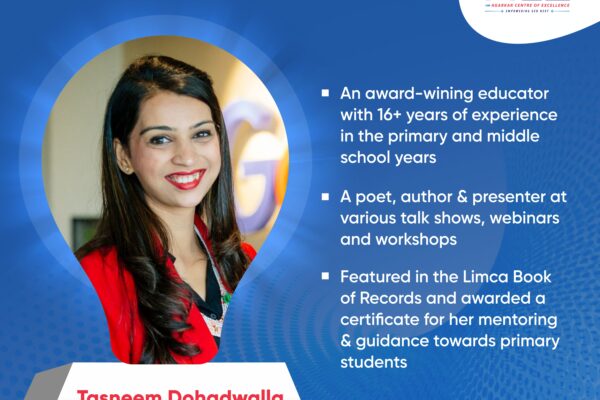Whether it is a fight between friends for a toy or having forgotten their worksheet at home, children of all age groups face different challenges or problems on a daily basis. Good problem solving skills are therefore a key to help them manage their life independently. The role of parents and teachers therefore is not to solve every problem for the child, but to give them opportunities and support to solve their own problems. This would mean that the adults are mere facilitators in the process rather than executors or doers.
When children are encouraged to solve their own problems, they become confident and independent individuals who can think creatively when faced with challenges as adults. These children learn to manage their emotions better, be persistent with their approach and develop an ability to make decisions. Naturally, these skills go hand in hand with the growth mindset. It is also crucial that the adults explain to children that there are some things that are out of anyone’s control. But while problem solving, it is important to focus on what we CAN control and do.
Here are some simple tips and strategies for adults to help children practice problem solving:
1. Role model effective problem solving for the child–
Adults can model how they have been working on the problem by trying out different solutions. It is also important that adults model that sometimes the solution does not work in the first go, but persistency is the key!
2. Ask children for advice– Adults can ask children for advice to help them find solutions to simple problems. When adults indicate that their solutions are valuable, it helps children gain the confidence to solve problems independently. Example – We have a lot of rain this year. Can we collect the rain water & use it for something? Where can we use it?
3. Let them experience consequences-While it is very difficult for adults to let children struggle or fail, it is important that children are allowed to sometimes fail such that they learn from the consequences.
4. Opportunities for creative play– Have children engage in activities and toys that require problem solving and thinking out of the box. Example – puzzles, manipulatives etc. These resources and toys help children solve in a non-threatening way. Adults can also engage in pretend play and present different situations to children where they have to think critically and creatively. Example – I want to dress up like a chef but I do not have the chef’s hat/ What can we do? Do you know what a Tiara means? Can we make one?- Adults can also provide children with open-ended craft material like paper, clay, sand, pebbles etc. that can be used in multiple ways creatively. This would help them understand that these materials do not have ‘one right way’ of using them, getting them to think creatively and independently.
5. Problem solving through stories– Adults can read age appropriate books to children where the main character faces problems. Examples – Capseller & the monkey, the Curious George series etc. Ask what if questions to children to have them think & engage. Ex- What if you were the cap seller in the story. What would you have done? Connect these scenarios to the child’s events and ask them to think about multiple creative solutions and their possible outcomes.-Adults can engage in role plays based on the stories where children play the main character and find creative solutions to problems. Children who are overwhelmed and have not had ample opportunities to solve their problems, generally focus on avoiding them rather than dealing with it. But when children at a younger age are given a clear guide to deal with their challenges in a stepwise manner, they feel confident & may want to try resolving it.
Here are the steps to help them –
Step 1: Help children identify the problem– Just stating or saying out the problem loudly, can help children who are feeling stuck and confused. Example: ‘You have forgotten to complete your worksheet” or “You do not have anyone to play with you during the snack break”-Adults may want to use this opportunity to share that making mistakes is completely normal and it is important to learn from it such that they are not repeated.
Step 2: Explore the various ideas and solutions– Help children brainstorm at least five solutions to a problem. It is important to let children know that no idea is bad or small. Every idea/solution is valuable even if it is a far fetched one. The key for adults here is to push the child to think creatively and think of all potential solutions.
Step 3: Select the best solution– This is the time where the adult can help the child weigh the pros and cons of all the potential solutions put together. The adult may even engage in a role play to help the child understand the pros and cons of each idea.
Step 4: Build and test the idea– Once the child has evaluated the pros and cons of all ideas, facilitate the child to select the best one and try it out. Adults may use this opportunity to share with the child that it may be possible that the first solution they try, may not work but that is absolutely ok!
Step 5: Evaluate the results & re-adjust if needed– Once they try the solution, help them evaluate and understand the result. If the idea does not work out, it is important for the adult to share that they can always go back to step 2 and try another idea. The idea is to re-adjust and try resolving the problem without losing hope.












